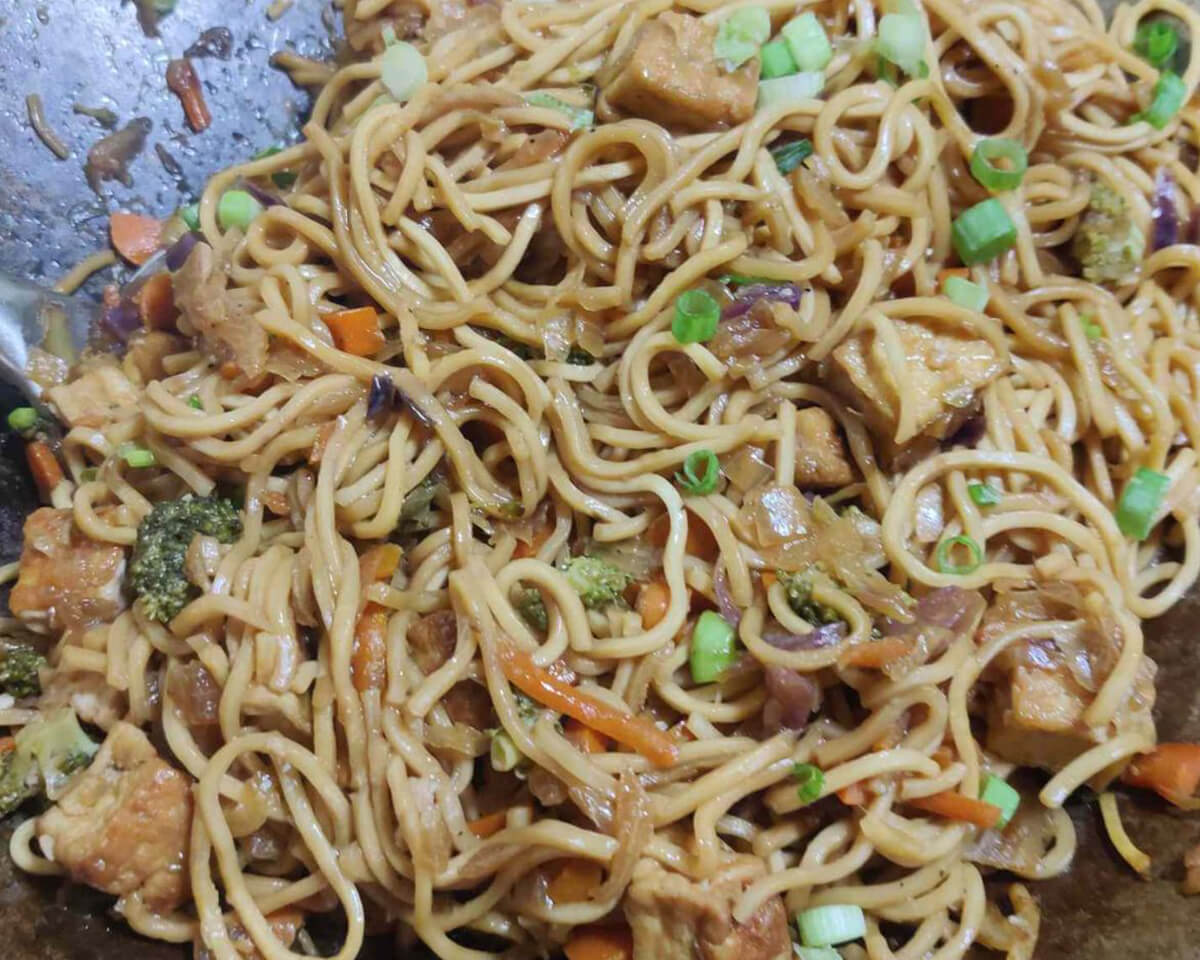Asian noodles offer not only delightful flavors but also various health benefits. Let’s explore some of the advantages of incorporating Asian noodles into your diet.
A. Nutritional value
- Asian noodles, depending on their type and preparation, can be a good source of complex carbohydrates, protein, fiber, and essential nutrients such as iron, calcium, and vitamin B. They provide energy and contribute to overall well-being.
B. Gluten-free options
- For individuals with gluten intolerance or celiac disease, rice-based noodles such as rice vermicelli, rice sticks, and rice noodles are excellent alternatives. These gluten-free options allow individuals to enjoy delicious noodle dishes without compromising their dietary restrictions.
C. Low-fat and low-calorie alternatives
- Many Asian noodle dishes, especially those that are stir-fried or served in clear broths, can be lower in fat and calories compared to heavy cream-based pasta dishes. By choosing lean proteins and incorporating plenty of vegetables, Asian noodle dishes can be a healthier choice for those watching their calorie intake.
VI. Tips for Cooking Asian Noodles
To ensure your Asian noodle dishes turn out delicious and satisfying, here are some valuable tips to keep in mind:
A. Proper noodle preparation
- Follow the instructions on the package for cooking times and methods specific to the type of noodles you are using. Properly cooked noodles should be al dente and not overly soft or mushy. Rinse cooked noodles with cold water to prevent them from sticking together.
B. Pairing noodles with sauces and toppings
- Experiment with different sauces and toppings to create unique flavor combinations. Soy-based sauces work well with stir-fried noodles, while coconut milk-based curries enhance the flavors of rice-based noodles. Consider adding a variety of proteins, vegetables, herbs, and spices to elevate the taste.
C. Stir-frying vs. boiling noodles
- Some Asian noodles, such as lo mein and yakisoba, are best stir-fried, while others like pho and laksa noodles are typically boiled in broth. Understanding the cooking methods that suit each type of noodle will ensure that they are cooked to perfection and complement the overall dish.
VII. Conclusion
Asian noodles offer a world of flavors and culinary experiences. Whether you’re a fan of spicy Thai noodles, hearty Japanese ramen, or comforting Chinese lo mein, there’s an Asian noodle dish to satisfy every craving. By exploring the diverse types, regional variations, and popular noodle dishes, you can embark on a delightful culinary journey and enjoy the slurpy goodness that Asian noodles have to offer. So, grab your chopsticks and indulge in the rich, complex flavors of slurpy Asian noodles.
FAQs
Q1: Are Asian noodles suitable for vegetarians or vegans?
- Yes, many Asian noodle dishes can be adapted to suit vegetarian or vegan diets. For example, you can replace meat with tofu or tempeh and use vegetable-based broths or sauces. Just make sure to check the ingredients and customize the dish accordingly.
Q2: Can I make Asian noodles at home from scratch?
- Absolutely! While it may require some practice and patience, you can make Asian noodles from scratch using simple ingredients like flour, water, and salt. There are plenty of online tutorials and recipes available to guide you through the process.
Q3: Are Asian noodles spicy?
- Not all Asian noodles are spicy. The level of spiciness varies depending on the dish and the region it originates from. Some noodle dishes, such as Thai Drunken Noodles or Korean Jajangmyeon, can be spicy, while others like Japanese soba or Chinese chow mein can be milder in terms of heat.
Q4: Can I substitute wheat-based noodles with gluten-free alternatives?
- Yes, if you have a gluten intolerance or follow a gluten-free diet, you can substitute wheat-based noodles with gluten-free alternatives like rice noodles, sweet potato noodles, or mung bean noodles. These options will allow you to enjoy Asian noodle dishes without gluten-related issues.
Q5: Are Asian noodles healthy for weight loss?
- Asian noodles can be part of a healthy weight loss diet if consumed in moderation and combined with nutritious ingredients. Opt for whole grain or rice-based noodles, load up on vegetables and lean proteins, and watch portion sizes to create balanced and satisfying meals.
Slurpy Asian Noodles
Ingredients
• 16 oz. thin spaghetti noodles (whole grain works great)
• 1 cup Teriyaki Sauce (homemade or store-bought)
• 1 cup snow peas, tips removed, sliced diagonally
• 1 bunch of green onions, sliced diagonally
• 2 carrots, shredded
• 1 tablespoon sesame seeds
• ½ cup cilantro, loosely chopped.
Instructions
1. Boil a large pot of water and cook noodles according to package instructions until al dente.
2. While the noodles cook, prepare the veggies.
3. Slice the snow peas and green onions, shred the carrots, and chop the cilantro.
4. Mix the teriyaki sauce, reserving 1 cup and saving the rest for later.
5. Drain the noodles and rinse with cold water.
6. Add the veggies (reserving some for garnish) and toss with the sauce.
7. Garnish with remaining veggies and sesame seeds.
Notes
• This recipe is perfect for using up any fresh veggies you have on hand!
• Add grilled chicken, beef, pork, or shrimp for extra protein.
• Serve hot or cold, it’s delicious either way!
• Save time by using a prepared sweet teriyaki sauce.
• Thicken the sauce with a cornstarch slurry (equal parts cornstarch and water).
